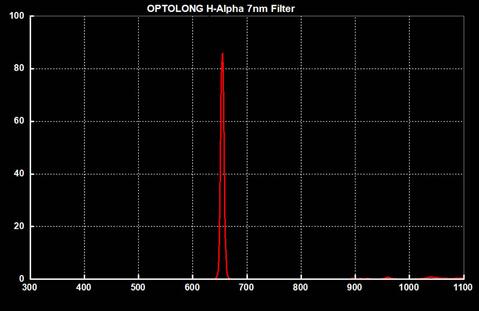
Optolong Filters
31.8mm H-ALPHA 7nm Filter Optolong





-
Codice SKU
HA-1
-
Disponibilità
Prodotto da ordinare
Descrizione
31.8mm H-ALPHA 7nm Filter Optolong
H-ALPHA 7nm Filter is among the most popular narrow-band filter types and creates a bandwidth of 7nm centered on a wavelength of 656nm.
The Filter reduces the transmission of certain wavelengths of light, particularly those produced by artificial light, including mercury vapor, sodium vapor lamps at both low and high pressure and unwanted natural light caused by the emission of neutral oxygen preent in the atmosphere (e.g. Skyglow).
The H-ALPHA astrophotography filter remains the best choice as it creates the highest contrast and is able to reveal even the finest details of the nebula.

Utilization and Performance
Suitable for viewing low emission nebulae in H-ALPHA even in moon light or light pollution conditions.
Narrow band imaging can be achieved by combining filters of the SHO set (H-ALPHA, OIII, SII), this will further help achieve a clear image even in heavy light pollution conditions.
The H-ALPHA filter is usually the first filter that is added to the LRGB KIT by most astrophotographers, in this way it's possible to blend the black and white image with the RGB data to obtain and enhance the structural details while maintaining a natural appearence of the image.
The H-ALPHA filter does not eliminate per se the effects of light pollution and does not increase the brightness of the object being shot, but instead it increases the contrast between the nebula and the night sky, making image processing easier.
This H-ALPHA 7nm filter is designed to be attached to filter wheels, to filter drawers or directly on DLSR cameras.
Technical Specifications
Technical Data
- Schott substrate material
- Thickness 2.0 mm (1.25”/2”/36 mm)
- Thickness 1.0 mm (Clip series)
- Surface Quality: 60/40 (Refer to MIL-O-13830)
- Fine-optically polished to ensure accurate 1/4 wavefront and <30 seconds parallelism over both surfaces
- 80-percent transmission at the h-alpha line 656 nm infrared wavelength 700 to 1100 nm cut-off
- 0.1-percent transmission of off-band, specifically major emission lines artificial light pollution (i.e. Na 589 nm, Hg 435 nm, and 578 nm). Transmission of 0.1-percent is equivalent to OD3 (Optical Density), and high optical density value indicates very low transmission, and low optical density indicates high transmission.
Coating Parameter
- Non-cementing optical substrate coating
- Electron-beam gun evaporation with low Ion-assisted deposition coating technology for durability and resistance to scratching, as well as stability on CWL (central wavelength) no deviation affected by temperature change
- Planetary rotation system offers precision and homogeneity of coatings ensuring high value on tansmission of pass-band and Optical density of off-band
Filter Cell:
- Ultra-this filter cell minimize vignetting by maximuizing possible clear aperture (clear aperture is 26 mm for 1.25-inch, 45 mm for 2-inch)
- Aero-metal Material/ Precise CNC Machinging/ Sand Blasting Process/ Black Anodized Finish/ Extinction Treatment to Prevent Reflection/ Laser Engraving No Fading

